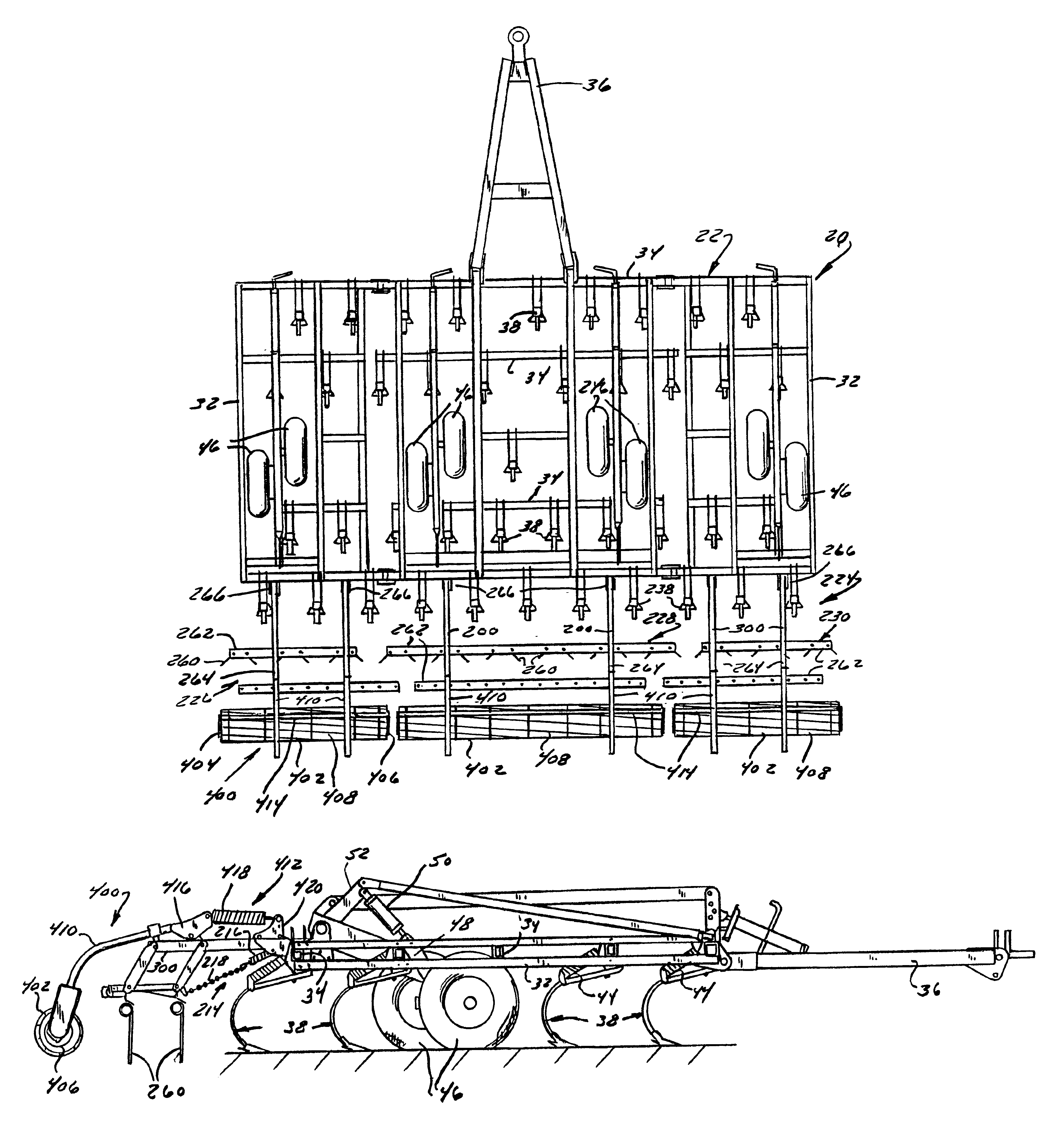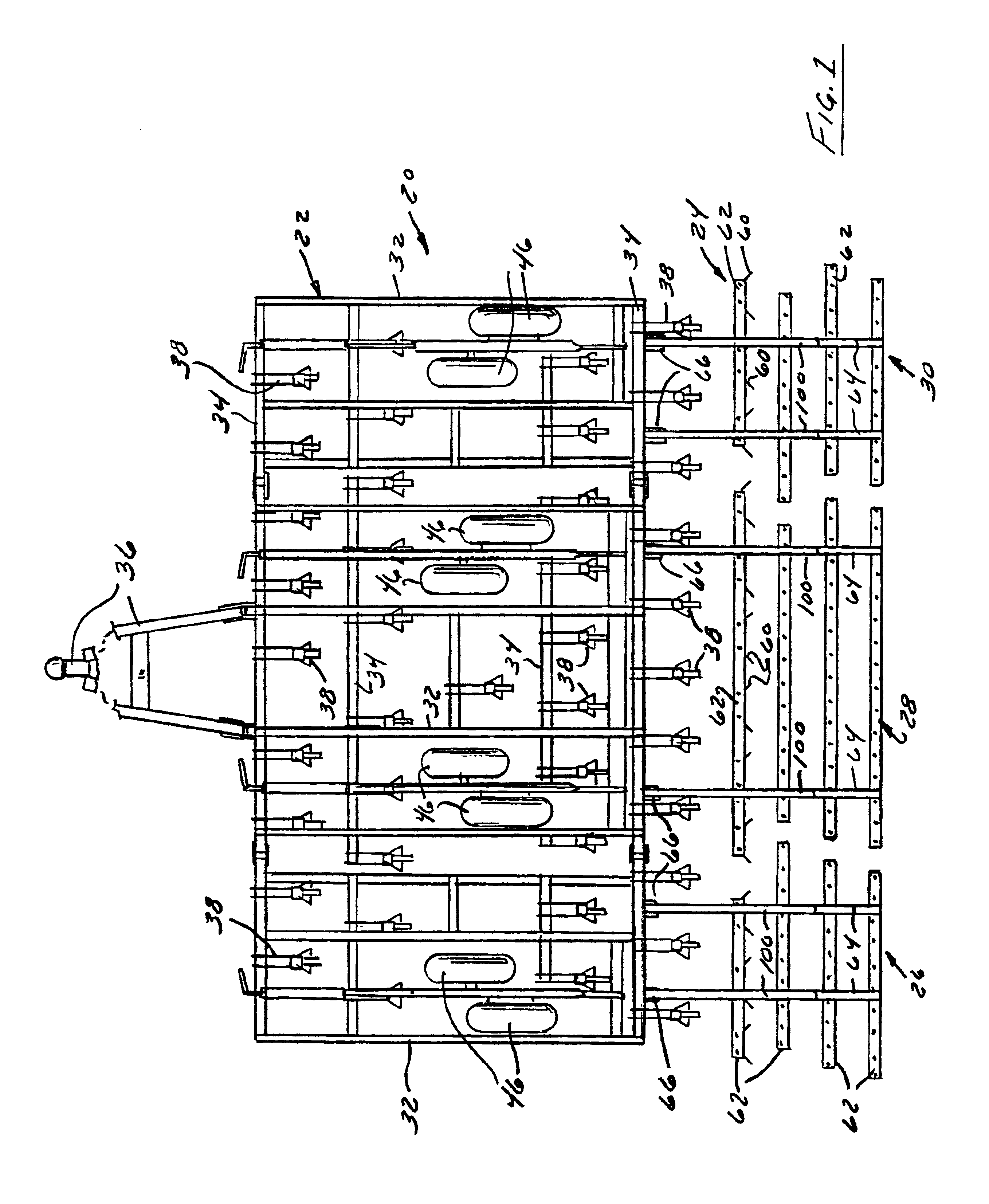Tillage implement with indexed harrow
a technology of working implements and harrows, applied in the field of soil working implements, can solve the problems of not properly positioning the tines of the typical harrow, producing ridges that are too large to permit planting, and not properly leveling the ridges, etc., to achieve the effect of maximizing the leveling capability of the harrow
- Summary
- Abstract
- Description
- Claims
- Application Information
AI Technical Summary
Benefits of technology
Problems solved by technology
Method used
Image
Examples
Embodiment Construction
[0035]Referring now to the drawings and initially to FIGS. 1 and 2 in particular, a ground working implement 20 constructed in accordance with a first preferred embodiment of the present invention includes a cultivator 22 and a harrow 24 articulated to one another in an end-to-end fashion. The cultivator 22 is configured to be towed by a tractor or other prime mover so as to till the soil over which the implement 20 travels. The harrow 24 is towed by the cultivator 22 and is configured to level windrows or ridges left by the cultivator 22. The harrow 24 preferably takes the form of a plurality (3 in the illustrated embodiment) of harrow sections 26, 28, 30 independently articulated to the back of the cultivator 22. The center harrow section 28 of the illustrated embodiment is wider than the two flanking end sections 26 and 30. However, different numbers of harrow sections of different relative widths, or even a single harrow section spanning the width of the swath tilled by the cult...
PUM
 Login to View More
Login to View More Abstract
Description
Claims
Application Information
 Login to View More
Login to View More - R&D
- Intellectual Property
- Life Sciences
- Materials
- Tech Scout
- Unparalleled Data Quality
- Higher Quality Content
- 60% Fewer Hallucinations
Browse by: Latest US Patents, China's latest patents, Technical Efficacy Thesaurus, Application Domain, Technology Topic, Popular Technical Reports.
© 2025 PatSnap. All rights reserved.Legal|Privacy policy|Modern Slavery Act Transparency Statement|Sitemap|About US| Contact US: help@patsnap.com



